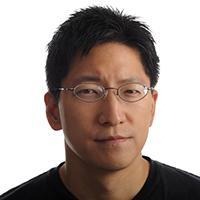Main Menu (Mobile)- Block
- Overview
-
Support Teams
- Overview
- Anatomy and Histology
- Cryo-Electron Microscopy
- Electron Microscopy
- Flow Cytometry
- Gene Targeting and Transgenics
- Immortalized Cell Line Culture
- Integrative Imaging
- Invertebrate Shared Resource
- Janelia Experimental Technology
- Mass Spectrometry
- Media Prep
- Molecular Genomics
- Primary & iPS Cell Culture
- Project Pipeline Support
- Project Technical Resources
- Quantitative Genomics
- Scientific Computing Software
- Scientific Computing Systems
- Viral Tools
- Vivarium
- Open Science
- You + Janelia
- About Us
Main Menu - Block
- Overview
- Anatomy and Histology
- Cryo-Electron Microscopy
- Electron Microscopy
- Flow Cytometry
- Gene Targeting and Transgenics
- Immortalized Cell Line Culture
- Integrative Imaging
- Invertebrate Shared Resource
- Janelia Experimental Technology
- Mass Spectrometry
- Media Prep
- Molecular Genomics
- Primary & iPS Cell Culture
- Project Pipeline Support
- Project Technical Resources
- Quantitative Genomics
- Scientific Computing Software
- Scientific Computing Systems
- Viral Tools
- Vivarium

Biography
I studied chemistry and physics as an undergraduate. In the last year of college, I became interested in neuroscience after hearing about it from some colleagues. I thought that people pretty much knew how the brain worked already—it’s just that I hadn’t taken those classes or read those books. I tried to look up questions that I had, and I realized that they weren’t really solved yet.
I entered graduate school in neuroscience and studied under Matthew Wilson for a PhD. It was in Wilson's Lab where I began to study place cells, recording the activity of neurons in the hippocampus to explore the relationship between these cells and spatial memory. It was an ideal place to do this work, because just a few years earlier, Matt had been a key developer of a technique to record the simultaneous activity of groups of about 100 individual neurons in freely moving rats.
Then I joined Michael Brecht’s lab in the Netherlands as a postdoctoral fellow. By combining his expertise in in vivo whole-cell recording with my experience doing freely moving extracellular recording, Michael and I developed the first method for performing intracellular recordings from freely moving animals. Later, I moved with Michael’s group to Berlin, where Michael, Jérôme Epsztein, and I further improved the method and then used it to obtain the first intracellular recordings of hippocampal place cells.
I joined Janelia in 2008 to continue research into hippocampal place cells and spatial memory as well as development of electrophysiological methods. Janelia is an ideal place to do research, providing both freedom to pursue one’s research interests and an environment with exceptional scientific and technical colleagues who can help make each other’s goals reality.
